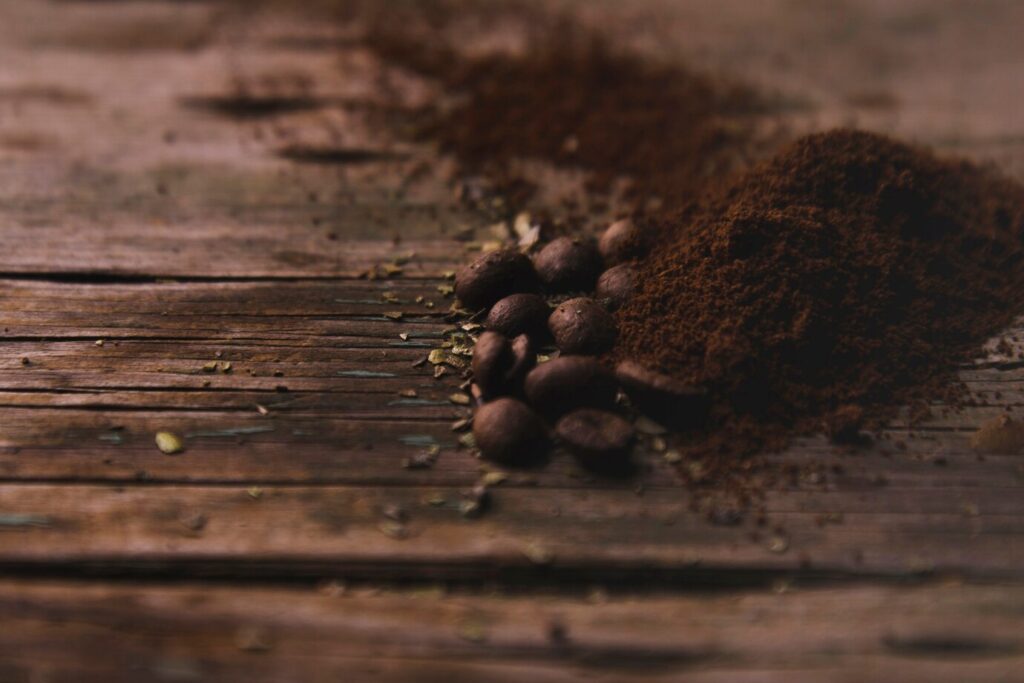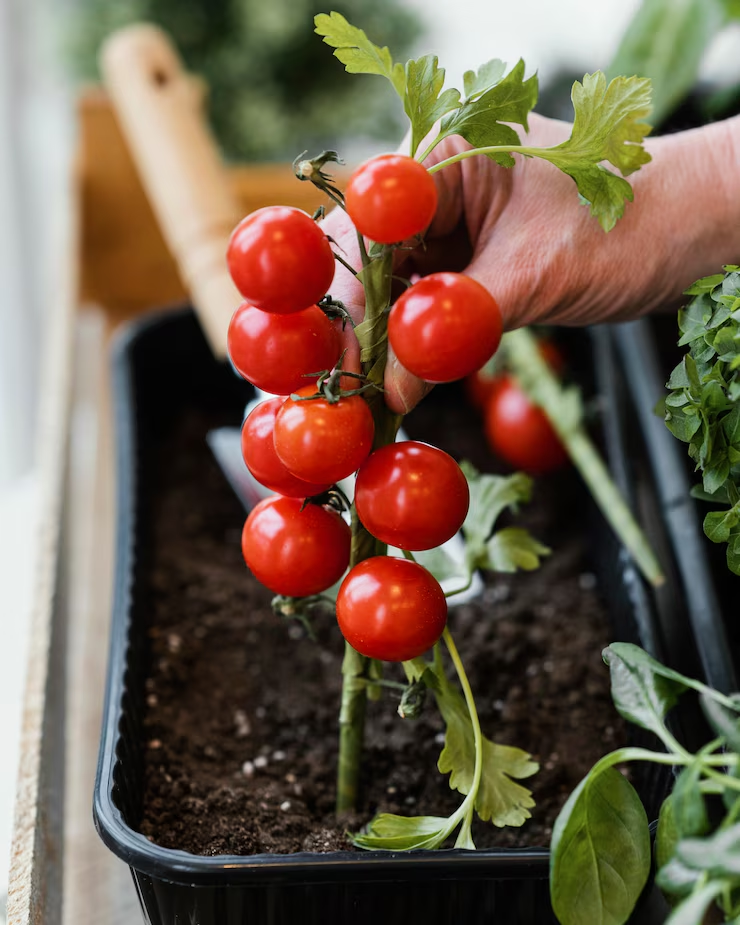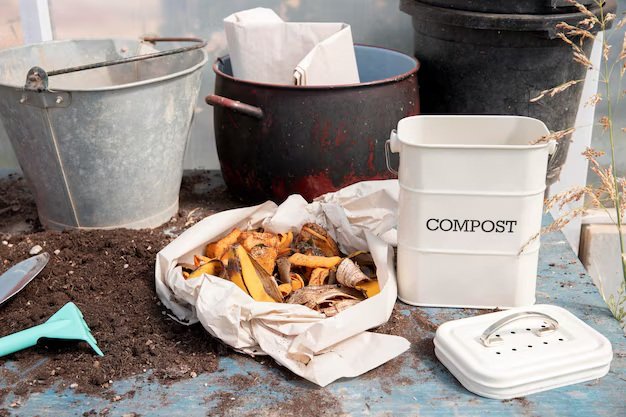What Plants Don’t Like Coffee Grounds
We all love a good cup of coffee, and it feels great to repurpose those used grounds in the garden. From Pinterest boards to gardening blogs, the advice seems clear: sprinkle coffee grounds around your plants for a natural boost. But is it really that simple?
While coffee grounds do contain nitrogen and can improve soil structure when composted, using them directly in your garden isn’t always beneficial. In fact, applying coffee grounds straight to the soil can sometimes do more harm than good. The caffeine and other compounds remaining in used coffee grounds can inhibit plant growth and even harm beneficial soil organisms.
In this guide, we will examine the science behind coffee grounds in gardening, highlighting which plants might suffer from their use and why. We’ll also explore studies and provide practical advice to help you make informed decisions. Whether you’re a seasoned gardener or just starting out, understanding the effects of coffee grounds on different plants is crucial for a thriving garden.

In This Article
- The Science Behind Coffee Grounds in Soil
- Plants That Dislike Coffee Grounds
- Complicating Factors
- How to Use Coffee Grounds the Right Way
- Alternatives to Coffee Grounds
- Conclusion:
The Science Behind Coffee Grounds in Soil
1. Soil pH and the Role of Coffee Grounds
Used coffee grounds are often believed to be highly acidic, but after brewing, they tend to be near neutral, with a pH ranging from 6.5 to 6.8. This means they generally won’t drastically alter soil pH. However, when applied in large quantities, especially without proper composting, they can slightly lower the soil pH, which might affect plants sensitive to acidity. It’s essential to monitor soil pH levels to ensure they remain within the optimal range for your specific plants.
2. Allelopathic Compounds
Coffee grounds contain allelopathic compounds like caffeine and diterpenes, which can act as natural pesticides. While this might seem beneficial, these compounds can inhibit seed germination and stunt the growth of certain plants. For instance, a study published in the American Journal of Plant Sciences found that caffeine interfered with the germination of Urochloa brizantha seeds, reducing plant height and increasing phytotoxicity. Therefore, it’s advisable to compost coffee grounds before application to reduce the concentration of these compounds.
3. Nitrogen Content
Used coffee grounds are rich in nitrogen, containing about 2% by volume. While nitrogen is essential for plant growth, applying coffee grounds excessively or without balancing them with carbon-rich materials like dry leaves or wood chips can lead to nitrogen imbalance. This imbalance may cause rapid foliage growth at the expense of flowers and fruits. Moreover, as coffee grounds decompose, soil microorganisms use nitrogen to break them down, temporarily tying up nitrogen and making it less available to plants.
Plants That Dislike Coffee Grounds
Let’s break down the primary plant groups and species that typically react poorly to coffee grounds.
1. Tomatoes (Solanum lycopersicum)
Why they struggle: Tomatoes prefer slightly acidic to neutral soil, with a pH between 6.0 and 7.0. While coffee grounds are only mildly acidic, they can still lower soil pH over time. More critically, coffee grounds are high in nitrogen, which promotes lush foliage growth. However, excessive nitrogen can lead to vigorous leaf development at the expense of fruit production.
According to horticultural experts, applying coffee grounds directly to tomato plants can disrupt the delicate nutrient balance required for optimal fruiting. The high nitrogen content encourages the plant to focus on leaf growth, resulting in fewer tomatoes.
Best practice: If you choose to use coffee grounds, compost them first to reduce acidity and balance nutrient content. Apply the composted material sparingly around the base of the tomato plants, ensuring it doesn’t come into direct contact with the stems.

2. Clover and Alfalfa (Leguminous Plants)
Why they struggle: Clovers and alfalfa, both members of the legume family, have a remarkable ability to enrich soil by fixing atmospheric nitrogen through symbiotic relationships with specific soil bacteria. This natural process allows them to thrive in soils with low nitrogen levels. However, introducing nitrogen-rich coffee grounds into their growing environment can disrupt this balance. The additional nitrogen from coffee grounds may reduce the plants’ reliance on their symbiotic partners, potentially diminishing their nitrogen-fixing efficiency.
Moreover, these legumes prefer neutral to slightly alkaline soils. While used coffee grounds are generally pH neutral, their decomposition can influence soil acidity over time. The gradual breakdown of organic acids in coffee grounds may lower soil pH, potentially making the environment less hospitable for clovers and alfalfa.
A study by Washington State University found that seed germination of alfalfa (Medicago sativa) and clovers (Trifolium species) was inhibited by water leached through coffee grounds, suggesting that certain compounds in coffee can adversely affect these plants.
Best practice: Avoid applying coffee grounds directly to soils where clovers or alfalfa are grown. If you wish to recycle coffee grounds, compost them thoroughly and use the resulting compost in moderation, ensuring it is well-balanced with other organic materials.

3. Lavender, Rosemary, and Sage (Mediterranean Herbs)
Why they struggle: These Mediterranean herbs are adapted to dry, well-drained soils with neutral to slightly alkaline pH levels. Coffee grounds, being acidic and moisture-retentive, can create unfavourable conditions for these plants. Excess moisture around the roots can lead to fungal diseases, and the lowered pH can stress the plants.
Horticultural experts caution against using coffee grounds around these herbs, as the altered soil conditions can compromise their health and vitality.
Best practice: Maintain well-drained soil conditions for these herbs and avoid introducing materials that retain excessive moisture or alter the pH significantly. If you compost coffee grounds, ensure they are well-balanced with other compost materials and use the compost sparingly around these plants.
4. Geraniums (Pelargonium spp.)
Why they struggle: Geraniums are sensitive to the caffeine content in coffee grounds. Caffeine acts as an allelopathic compound, which means it can inhibit the growth of nearby plants by interfering with their hormonal balance. Studies have shown that caffeine can suppress growth hormones in geraniums, leading to stunted development and reduced flowering.
Additionally, the acidity and moisture retention properties of coffee grounds can create an environment conducive to root rot and other fungal issues in geraniums.
Best practice: Avoid using coffee grounds directly around geraniums. If you wish to utilise coffee grounds, compost them thoroughly to reduce caffeine content and acidity, and apply the compost in moderation, ensuring it is well-aerated and does not retain excessive moisture.
5. Seedlings and Young Plants
Why they struggle: Seedlings and young plants are particularly vulnerable to the allelopathic compounds found in coffee grounds, such as caffeine. These compounds can inhibit seed germination and root development. Moreover, the fine texture of coffee grounds can compact easily, creating a dense layer that impedes water and air flow to the roots.
Research indicates that applying coffee grounds directly to soil can significantly reduce the germination rates of various plant species. This effect is due to a combination of chemical inhibition, mainly from compounds like caffeine and phenolics, and physical changes to the soil structure. The fine texture of coffee grounds can lead to soil compaction, which inhibits water infiltration and air exchange, critical factors for seedling development. These factors make coffee grounds unsuitable for use with seedlings and young plants. Studies have shown that even low concentrations of coffee grounds can disrupt seed germination and stunt early plant growth
Best practice: Refrain from using coffee grounds in seed-starting mixes or around young plants. If incorporating coffee grounds into your gardening routine, ensure they are composted thoroughly and mixed with other organic materials to create a balanced, well-structured compost suitable for mature plants.
Learn More: What Plants Not to Use Neem Oil On
Complicating Factors
Moisture Retention
Coffee grounds are finely textured and can compact easily when applied directly to the soil. This compaction creates a dense layer that resists water penetration, potentially leading to water pooling on the surface and depriving plant roots of necessary moisture and oxygen. Such conditions can stress plants and promote root diseases. To mitigate this, it’s advisable to mix coffee grounds with other organic materials like compost, straw, or wood chips to improve soil structure and ensure proper water infiltration.
Mold Development
Used coffee grounds, especially when stored in moist, airtight conditions, can develop mould. While some moulds, such as white or green varieties, are generally harmless and part of the natural decomposition process, others can indicate excessive moisture and poor aeration. For instance, black mould may suggest anaerobic conditions that are unfavourable for composting. To prevent unwanted mould growth, ensure coffee grounds are stored in a dry, well-ventilated area and incorporated into compost piles promptly.
Worm Caution
While earthworms can process coffee grounds, excessive amounts may be detrimental due to the caffeine content. Studies have shown that high concentrations of coffee grounds can negatively affect worm populations, reducing their biomass and activity. To support a healthy worm environment, it’s best to use coffee grounds sparingly and mix them with a variety of other organic materials in your compost.
How to Use Coffee Grounds the Right Way
1. Start with Composting
Used coffee grounds, being rich in nitrogen, are a great “green” addition to your compost pile. To balance their high nitrogen content, mix them with carbon-rich “brown” materials like dry leaves, straw, or shredded newspaper. This balance helps the compost break down efficiently and prevents unpleasant odours.
2. Apply Sparingly as Mulch
If you’re using coffee grounds as mulch, moderation is key. Apply a thin layer—no more than half an inch—and cover it with a thicker layer of coarse organic mulch like wood chips or straw. This prevents the grounds from compacting, which can create a barrier that repels water and air, hindering plant growth.
3. Keep Away from Plant Stems and Seedlings
Avoid placing coffee grounds directly against plant stems, roots, or young seedlings. The fine particles can clump together, creating a dense layer that retains moisture and may lead to rot or fungal issues.
4. Test Soil pH
Before using coffee grounds, test your soil’s pH. While used coffee grounds are generally close to neutral, their effect on soil pH can vary. An inexpensive soil test kit can help determine if your soil is compatible with coffee grounds.
Alternatives to Coffee Grounds
If you’re looking to enrich your soil naturally, consider these instead:
- Composted Manure: Composted manure is a nutrient-rich addition to your soil. It enhances soil structure, boosts water retention, and supports beneficial microbial activity, all of which contribute to healthier plant growth.
- Banana Peels: Banana peels are rich in potassium, phosphorus, and calcium—essential nutrients for plant development. However, instead of placing them directly into the soil, it’s advisable to compost them first. This method ensures that the nutrients are more readily available to plants and helps prevent issues like pest attraction.
- Crushed Eggshells: Eggshells are an excellent source of calcium, which is vital for plant cell wall strength. Crushing and drying them before application can also help deter pests like slugs and snails, as the sharp edges create a barrier that these soft-bodied creatures avoid.
- Wood Ash: Wood ash contains potassium and trace elements beneficial for plant growth. It also has a liming effect, which can help neutralise acidic soils. However, it’s important to use wood ash sparingly and only on soils that are not already alkaline, as excessive use can lead to nutrient imbalances.
Learn More: Banana Peel Water for Plants
Conclusion:
Coffee grounds can be a valuable tool, but like any soil amendment, they need to be used with knowledge and restraint. Many plants thrive on the stuff, but many don’t.
Understanding your soil, your plants, and how amendments interact is the key to healthy, thriving gardens. Let the research guide your hand, not just the latest social media trend.
Actionable Advice:
- Test the soil before any amendment.
- Compost your grounds with carbon-rich material.
- Keep a planting journal to track what works (and doesn’t).
- Be sceptical of universal advice—plants are as individual as people.
“A gardener grows not just plants, but knowledge. Every mistake is a lesson. Even a bad batch of coffee can teach you something.” —Me (a former tomato killer turned cautious composter)
Stay grounded and grow smart.







